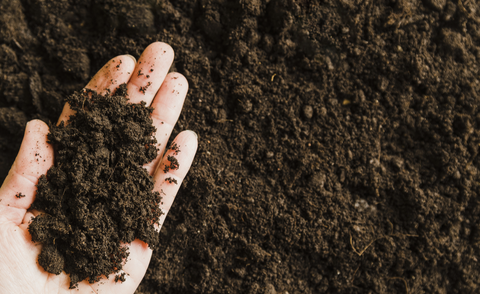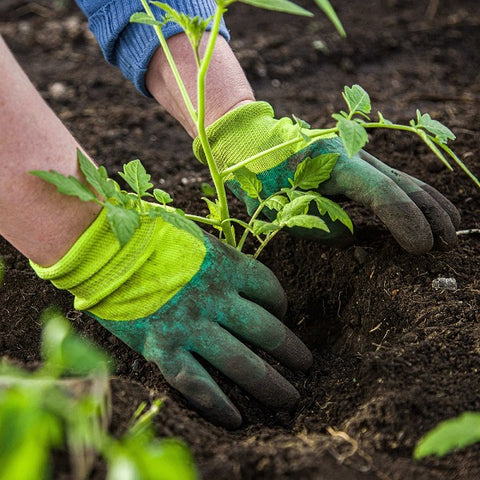Soil erosion is a common challenge that gardeners face, and its impact can be especially pronounced in raised garden beds. These compact, elevated structures are designed to optimize growing conditions, but they also come with unique considerations for soil retention. In this blog, we'll delve into the causes and effects of soil erosion in raised beds, explore effective prevention strategies, and offer practical tips to preserve your plot and nurture thriving plants. The following content also has some reference value for raised garden beds.

Understanding Soil Erosion: Unraveling the Causes
Soil erosion occurs when the topsoil is displaced by the action of wind, water, or other external forces. Several factors contribute to soil erosion, and understanding these triggers is crucial for implementing preventive measures in raised garden beds:
Water Erosion:
- Heavy Rainfall: Intense rainfall can lead to water runoff, carrying away valuable topsoil.
- Sloping Terrain: Raised beds on sloping ground are particularly susceptible to water erosion.
Wind Erosion:
- Loose Soil: Unprotected, loose soil in raised beds can be carried away by strong winds.
- Absence of Windbreaks: Lack of barriers or windbreaks allows wind to sweep across the bed.
Compaction:
- Foot Traffic: Regular walking or compacting the soil surface can reduce its resistance to erosion.
- Heavy Equipment: The use of machinery or tools in the garden can lead to soil compaction.
Lack of Ground Cover:
- Bare Soil: The absence of vegetation or cover crops leaves soil vulnerable to erosion.
- Limited Plant Roots: Plants play a crucial role in stabilizing soil with their root systems.
The Impact of Soil Erosion on Raised Garden Beds: Unearthing the Consequences
Soil erosion poses several challenges for raised garden beds, affecting both the health of the soil and the overall productivity of the garden:
Loss of Nutrients:
- Eroded soil often carries away essential nutrients, depleting the fertility of the raised bed.
- Nutrient deficiency can negatively impact plant growth and yield.
Compromised Soil Structure:
- Erosion disrupts the loose and well-aerated soil structure in raised beds.
- Soil erosion can cause compaction that hinders root penetration and water infiltration.
Reduced Water Infiltration:
- Erosion may cause uneven surfaces in raised beds, impacting water distribution and plant growth.
- The bed's capacity to hold moisture is affected by reduced water infiltration.
Exposure of Plant Roots:
- Plant roots that are exposed due to eroded soil may be more vulnerable to damage and dehydration.
- Roots that are exposed face increased vulnerability to changes in temperature and pests.
Protecting Your Garden Haven: Effective Measures Against Soil Erosion
Now that we understand the causes and impact of soil erosion, let's explore practical and effective measures to shield your raised garden beds:
Mulching:
- Application: Spread a layer of organic mulch, such as straw or wood chips, on the surface of the raised bed.
- Benefits: Mulch acts as a protective barrier, reducing water runoff and preventing soil splash.
Cover Cropping:
- Selection: Choose cover crops with dense foliage and strong root systems, such as clover or rye.
- Benefits: Cover crops provide ground cover, protect against erosion, and enhance soil structure.
Terracing:
- Construction: Build terraced raised beds on sloping terrain to reduce the impact of water erosion.
- Benefits: Terraces create flat surfaces, minimizing water runoff and allowing for better water absorption.
Windbreaks:
- Planting: Establish windbreaks, such as shrubs or trees, on the windward side of raised beds.
- Benefits: Windbreaks reduce the force of wind on the soil, preventing wind erosion.
Planting Ground Cover:
- Selection: Choose low-growing plants with spreading foliage to cover the soil surface.
- Benefits: Ground cover plants protect against erosion and contribute to soil stabilization.
Raised Bed Borders:
- Construction: Build sturdy borders around raised beds using materials like wood or stone.
- Benefits: Borders contain soil and prevent it from spilling over, especially during heavy rainfall.
Intelligent Watering:
- Drip Irrigation: Use drip irrigation systems to deliver water directly to the base of plants.
- Benefits: Controlled watering minimizes soil disturbance and reduces surface runoff.
Vegetative Buffer Strips:
- Planting Strips: Establish strips of native grasses or plants along the edges of raised beds.
- Benefits: Buffer strips absorb excess water, preventing it from reaching the raised bed.
Soil Amendments:
- Addition of Organic Matter: Incorporate organic matter like compost to enhance soil structure.
- Benefits: Improved soil structure reduces the risk of compaction and erosion.
Regular Maintenance:
- Inspections: Regularly inspect raised beds for signs of erosion and address issues promptly.
- Benefits: Timely maintenance ensures the effectiveness of erosion control measures.











